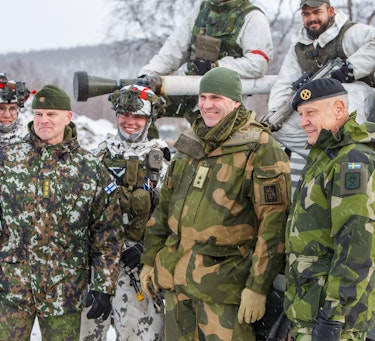Nordic Defence Cooperation: Similarities and differences in the Nordic Perspectives

Finland’s and Sweden’s NATO applications in May 2022 is historical, and makes the prospect for a close and fruitful Nordic defence cooperation better than ever.
The sky is the limit when Finland and Sweden eventually will be NATO members, and all the Nordic states will be allied! There are, however, reasons for flagging a few factors that still can impede common defence planning and defence cooperation more in general: historical factors, geopolitical factors, and technological and organizational factors.
First, Denmark and Sweden dominated Finland and Norway for hundreds of years until they finally gained their independence in 1905 (Norway) and 1917 (Finland) respectively. In addition, between 1809 and 1917, Finland had been a part of Russia. Such historical experiences play a part today when an increased Nordic defence cooperation is planned and implemented. Finland and Norway are, for good reasons, sensitive towards especially Swedish tendencies to dominate the agenda politically and militarily. Furthermore, Sweden is still viewed by both the Norwegian and Finnish government as not doing what it could to help when Finland was attacked by the Soviet Union 30 November 1939, and Norway was attacked by Nazi Germany 9 April 1940. These historical experiences create different perspectives on Nordic defence cooperation from the Nordic countries.
Second, different geopolitical views will also bring different perspectives on Nordic defence cooperation from the Nordic countries point of view. Norway has traditionally been uninterested in the geopolitics of the Baltic Sea, and Finland and Sweden have traditionally been uninterested in the geopolitics of the North Atlantic. Denmark has been interested in the geopolitics of both areas, but never had the resources to make a difference in either of them. As was discussed during the Army Summit, this can actually end up in different command and control conditions between Norway on the one hand, and Denmark, Finland and Sweden on the other, within NATO.
However, there are geographical areas that the countries have a very strong common interest to defend together, and where it is rational to focus on common defence. The North Calotte (Finland, Norway, and Sweden), The Baltic Straits and surrounding areas (Denmark, Norway, and Sweden), and the Åland Islands (Finland, and Sweden) are the most obvious examples. Therefore, even before Finland’s and Sweden’s NATO applications, there has been plans for common, integrated operational defence planning in these geographical areas.
Third, there are technological and organizational factors that will bring different perspectives from the Nordic countries regarding Nordic defence cooperation within NATO. Denmark, Norway, and Sweden have more technologically advanced, but much smaller, defence forces than Finland. Finland can mobilize hundreds of thousands of conscript soldiers, and has a resilient society that can fight a war for a long time. Denmark, Norway, and Sweden are using the conscript system to recruit more or less professional soldiers to a few high-quality units that neither can fight a war for a long time, nor can fight in different directions at the same time. In addition, societal resilience is much lower in these countries.
Sweden is also – compared to Denmark, Norway, and Finland – reluctant to procure defence systems from the shelf. The procurement of the US made Patriot system is an obvious exception, but as an advanced industrial country, Sweden prefer to keep the ability to build, and to buy, Swedish made platforms, especially fighter jets, submarines, artillery, and armored combat vehicles. This can, but must not, impede Nordic defence cooperation, but it is yet an example of differences in Nordic perspectives.
Finally, it must be underscored again that the historical Finnish and Swedish NATO applications are laying a great foundation for Nordic defence cooperation in the years to come, despite differences in Nordic perspectives. It has never been such good conditions for cooperation, and the sky is really the limit!
Relevant articles: